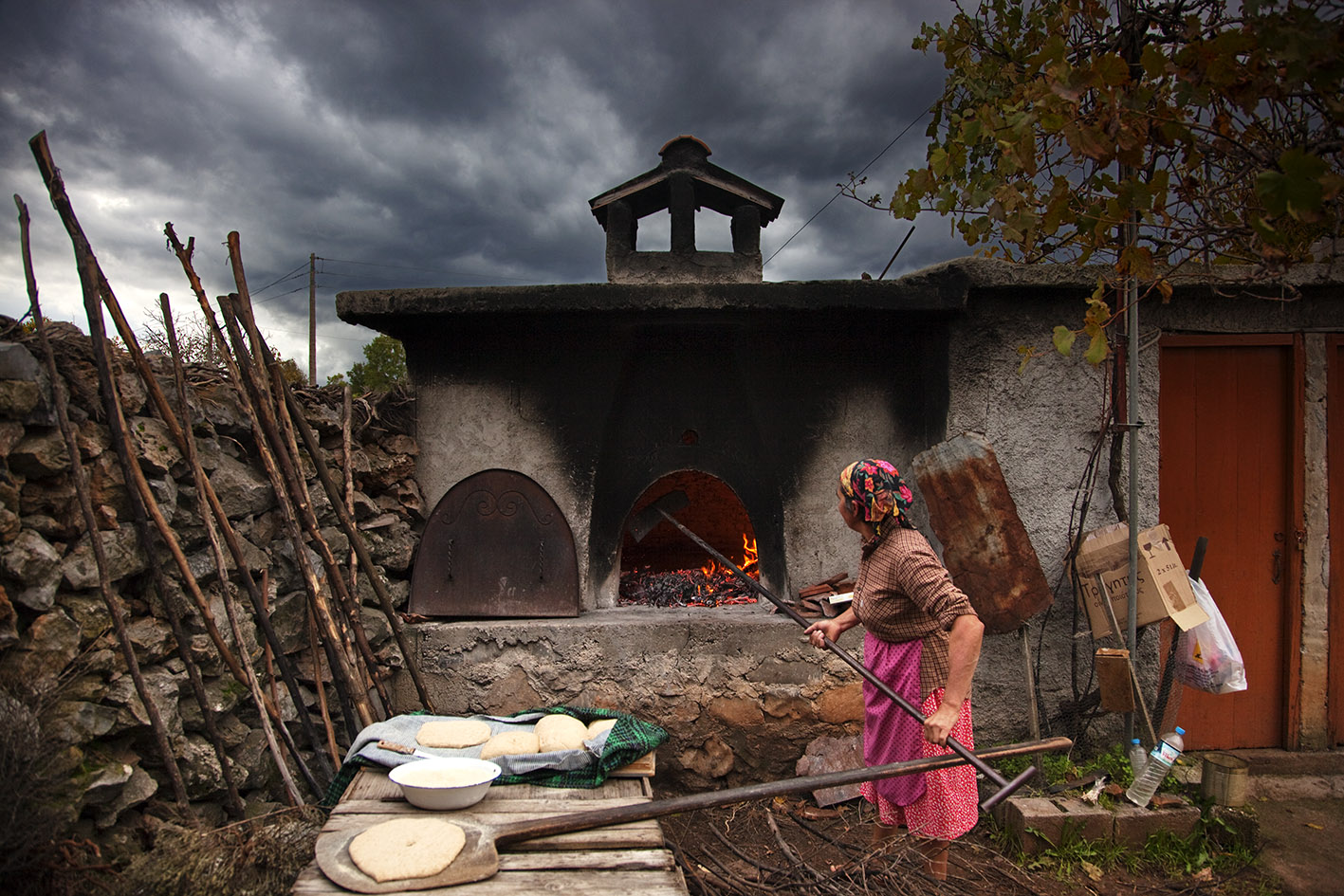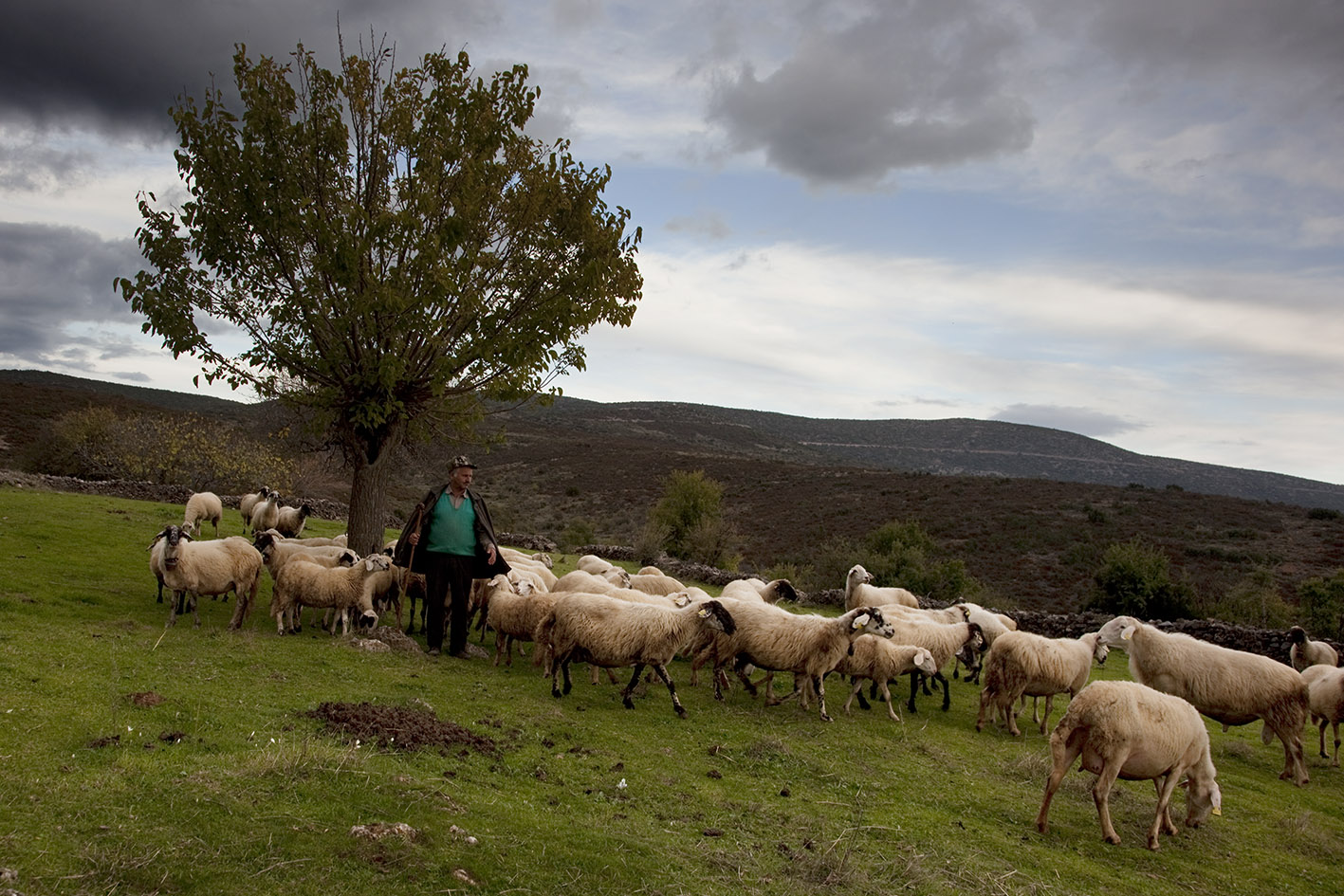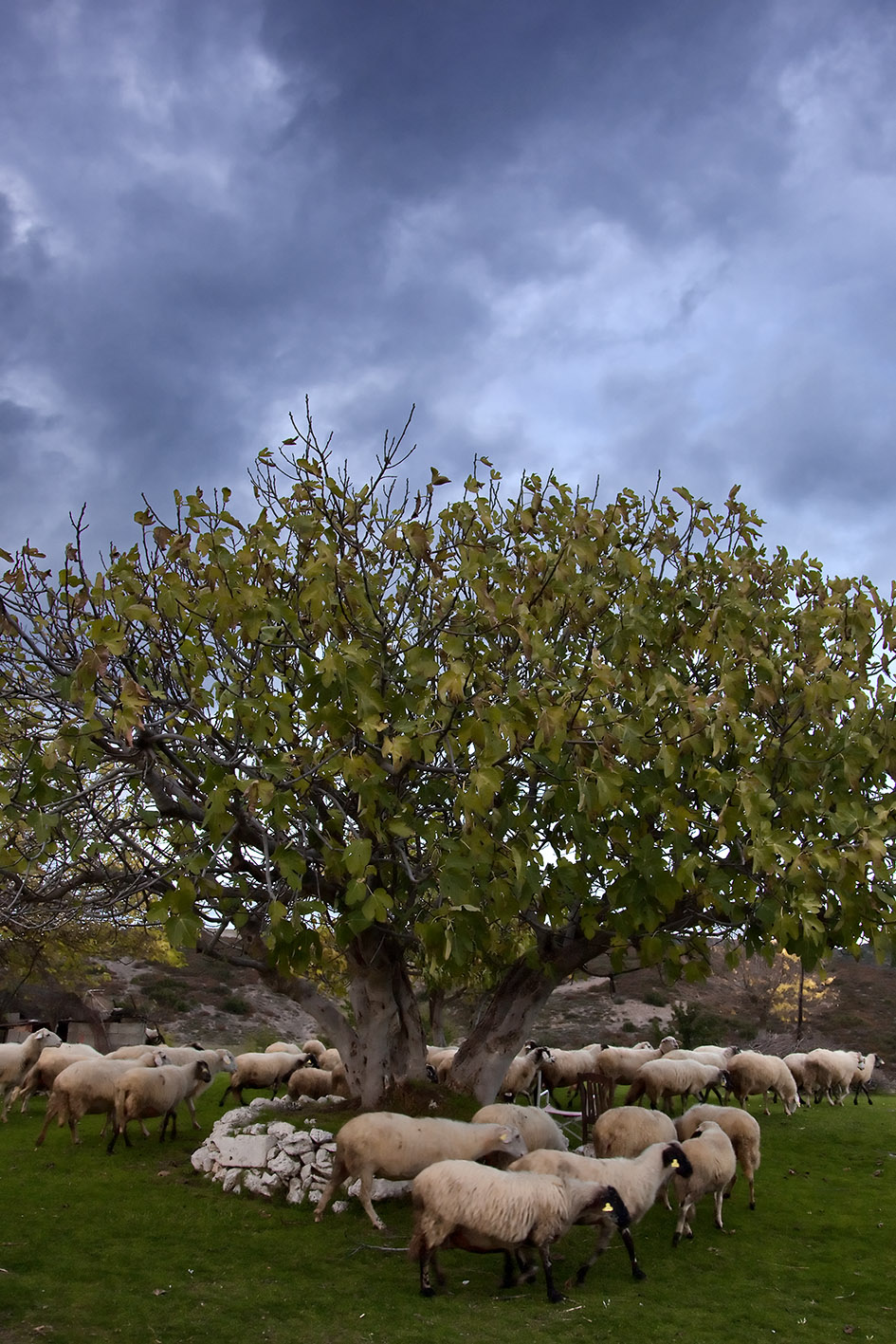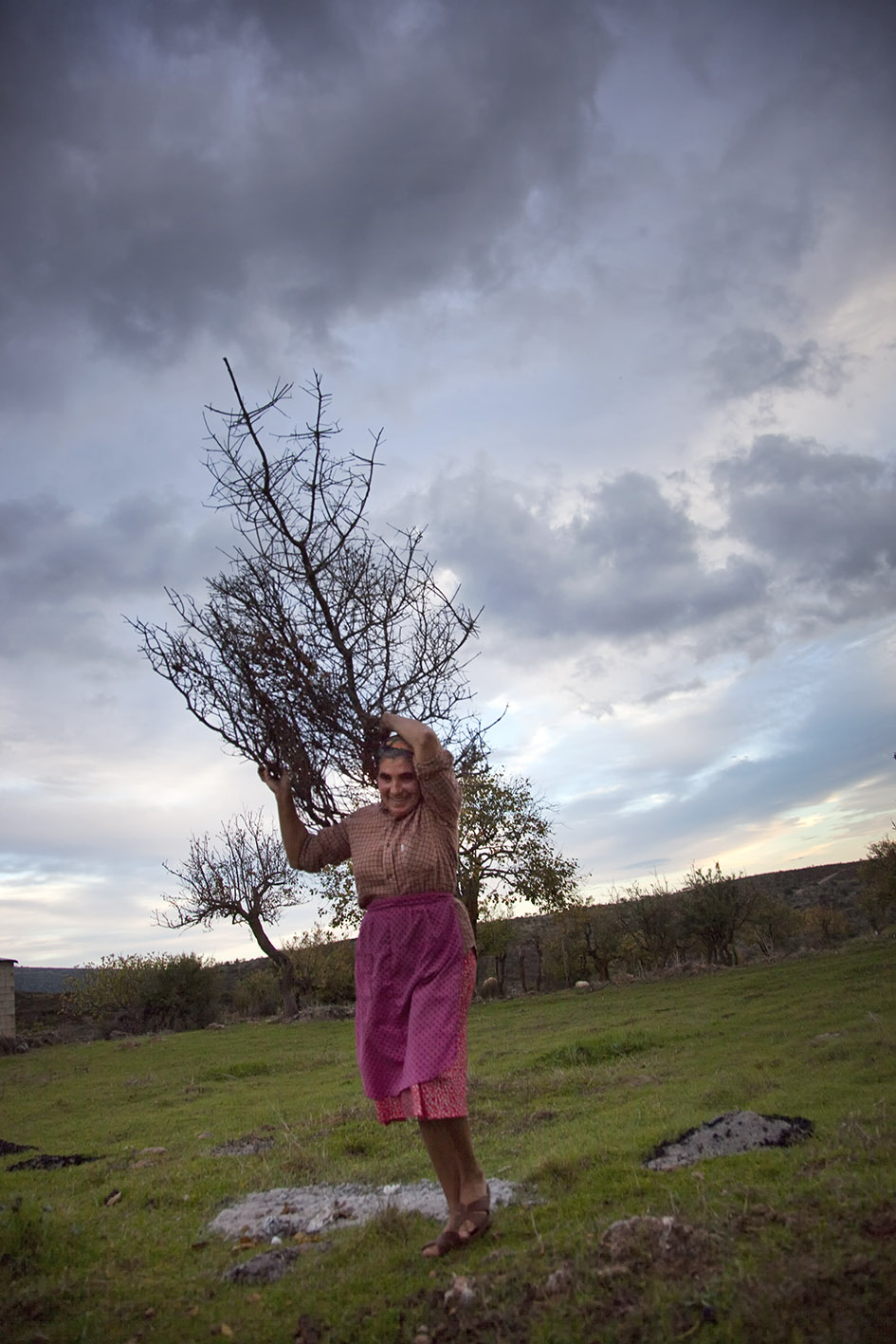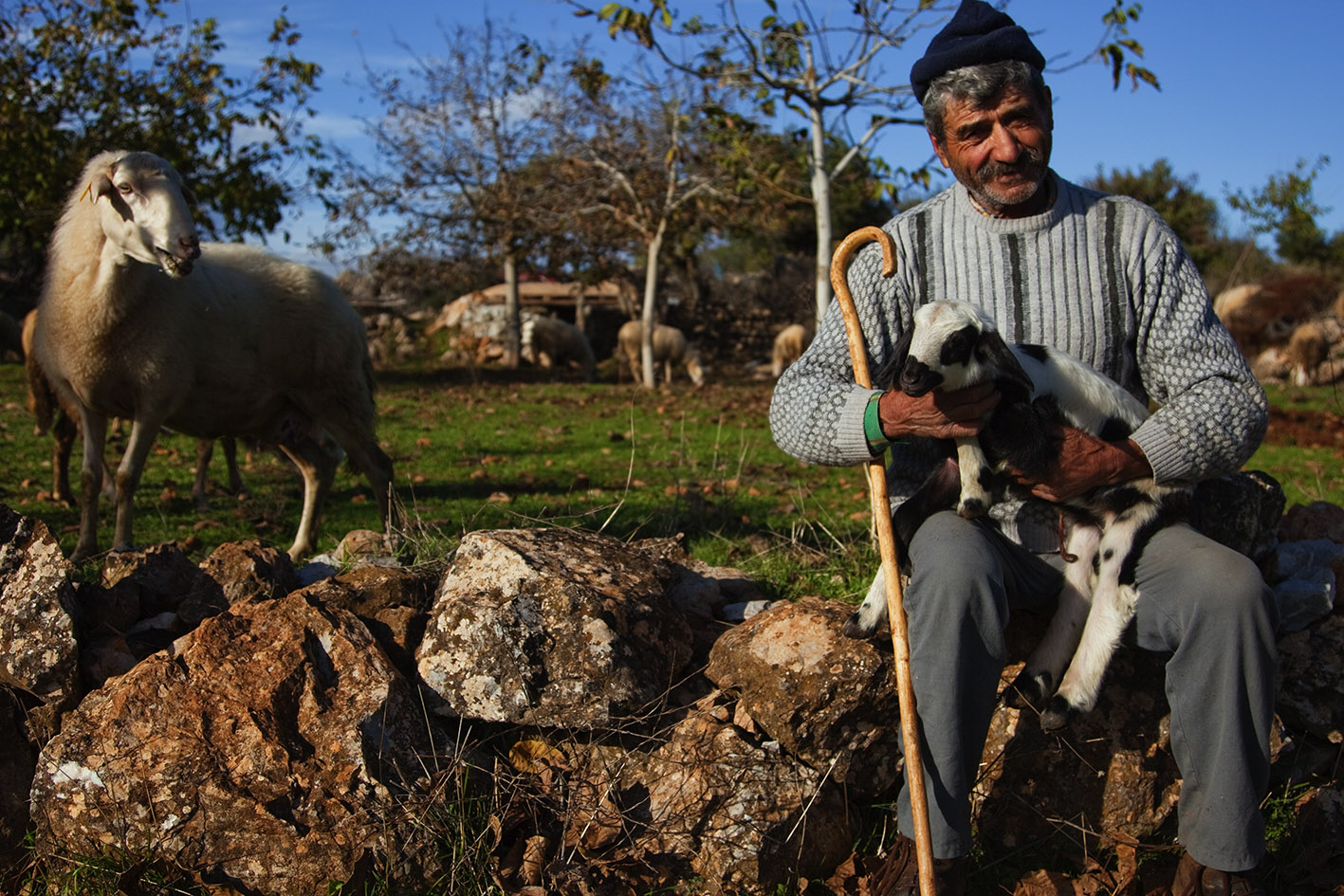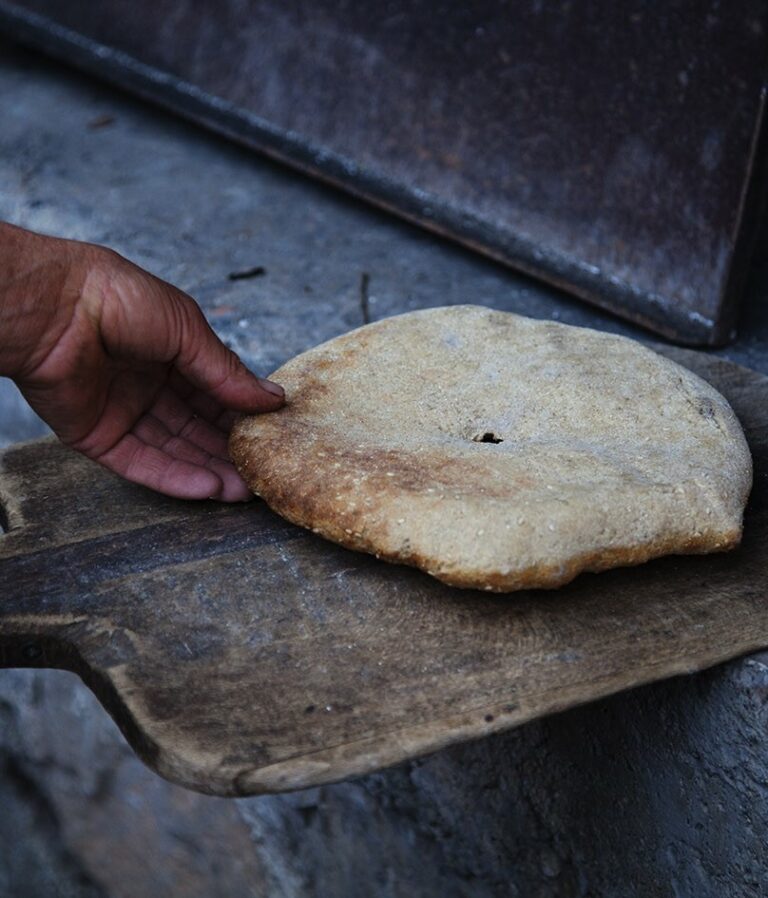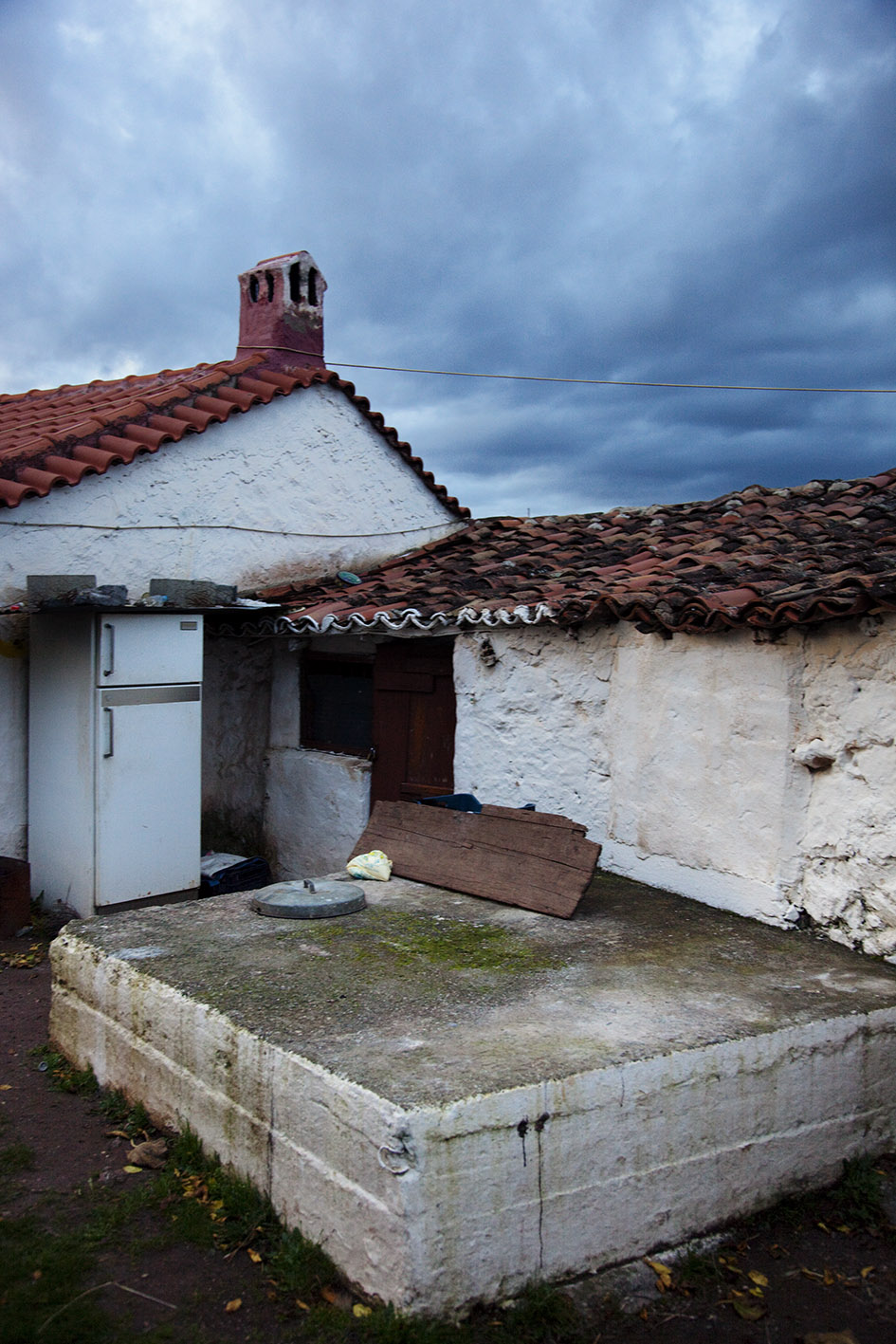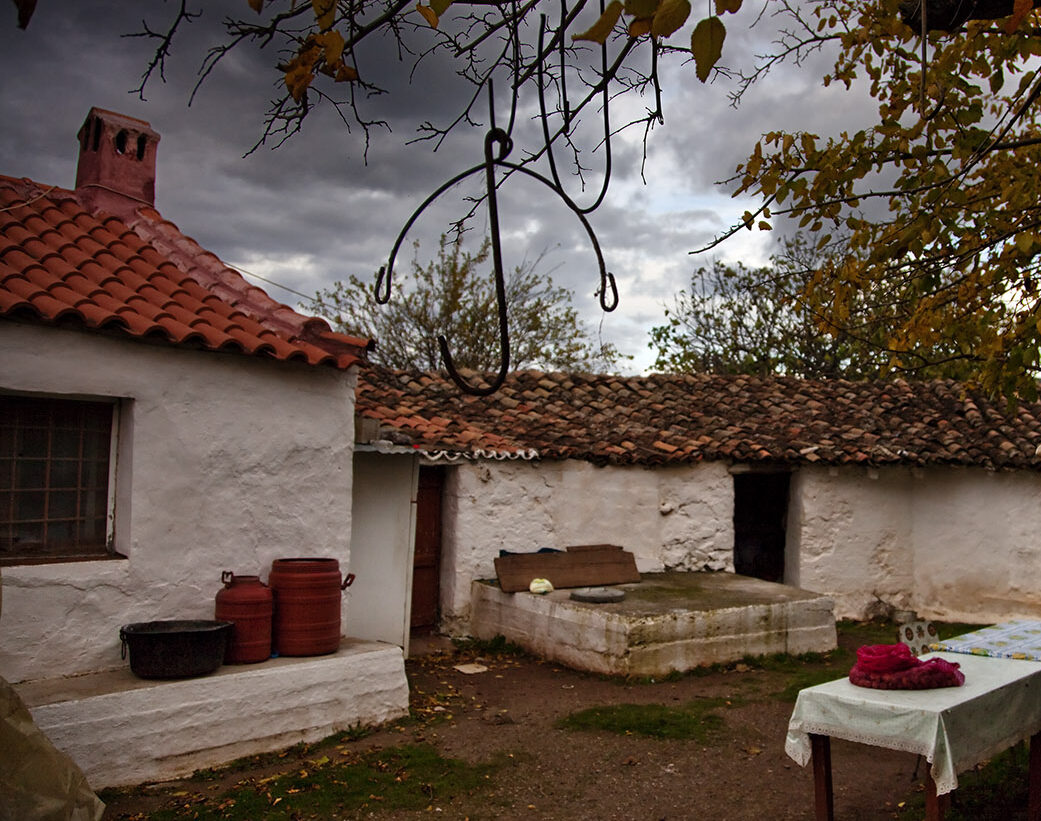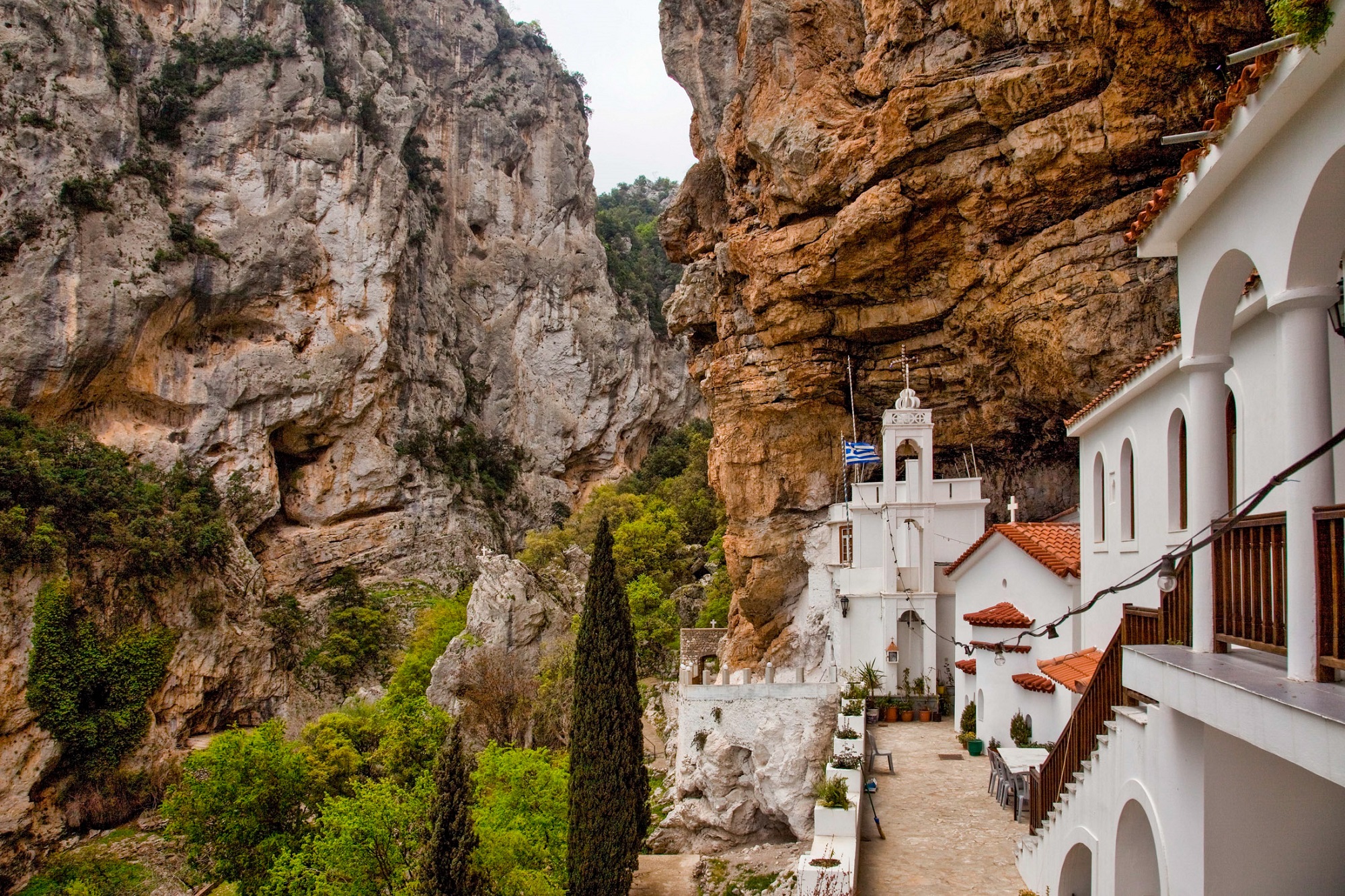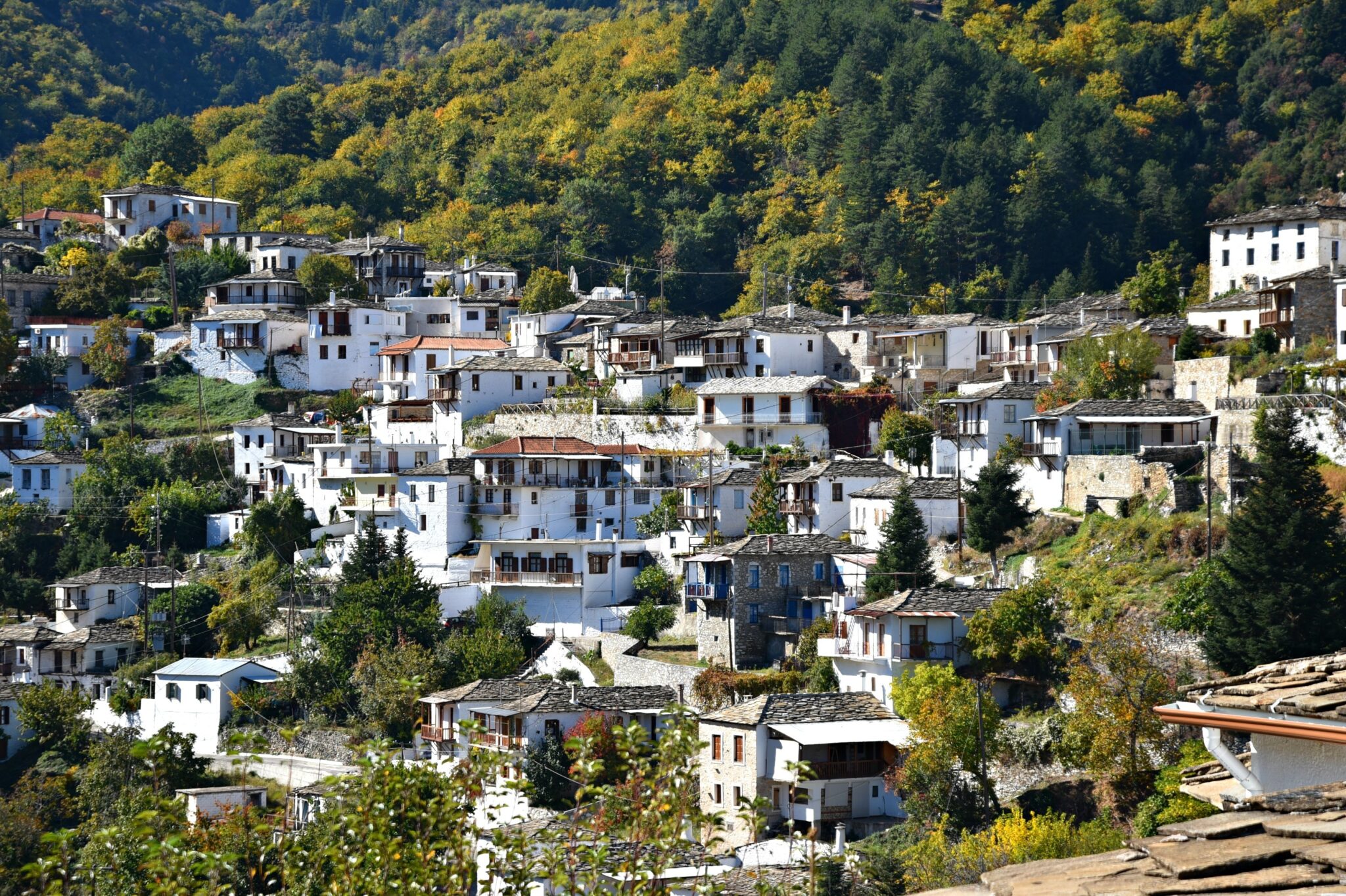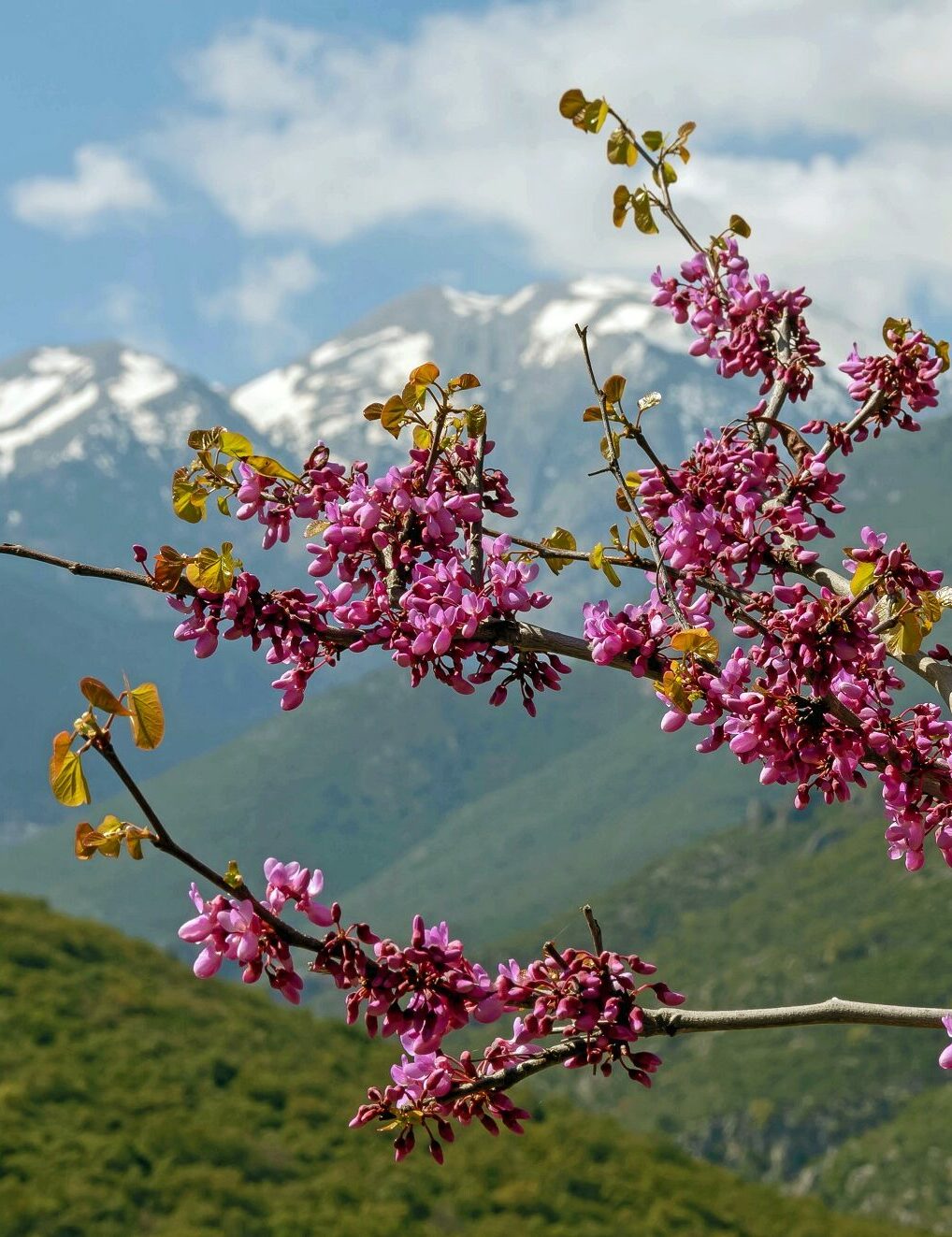Leonidio and the wider area of Kynouria have always been somewhat isolated. Until the middle of the 20th century, the easiest way to reach Leonidio from Athens was by sea, so it’s no surprise that some of Greece’s most authentic – albeit small – villages can still be found on the slopes of Mount Parnon. One such village is the Tsakonian village of Vaskina (or Voskina).
The journey to Vaskina is not the easiest, but it’s fascinating. The roads wind through impressive Tsakonian cliffs, with occasional panoramic views of the Leonidio plain. To reach Vaskina, follow an uphill road northwest of Leonidio. The village sits on a plateau 15 kilometres from the coastal town of Arcadia. Isolated and wild, Vaskina is built at an altitude of 800 metres. The village is divided into two settlements, Ano (upper) Vaskina and Kato (lower) Vaskina. In the upper settlement, two domed Mycenaean tombs were discovered in the 1930s, along with pottery from the same period and evidence of a large settlement, suggesting that it has been inhabited since ancient times.
As far as we know, the area was resettled during the Ottoman period, which is when the name Vaskina (or Voskina) appears. A typical Tsakonian village, it has seen periods of prosperity and decline. Today there are only a few permanent residents, most of whom continue their ancestors’ professions as livestock breeders. They keep their sheep and goats in barns and pens around the village and make a living from them. The region is characterised by extensive pastures and an environment conducive to the production of excellent thyme honey. In recent years, however, many of these pastures have been converted into solar farms.
Like other small villages in the Greek countryside, the highlight of village life in Vaskina is the summer festival, when those who have moved away to the big cities return and there is more activity in the area. In Vaskina, this happens on the 19th and 20th of July for the feast of the prophet Elias. Another festival called “Shepherds’ Day” takes place at the end of August. Goats and lambs are roasted in large wood-fired ovens, and the hospitable locals offer plenty of wine, hand-kneaded bread and various mezes.
Anyone who attends these festivals will understand that the Vaskina locals – both permanent and temporary – truly love their place and their Tsakonian heritage. In recent years they have established an annual memorial service for the deceased villagers, which takes place on the last Sunday of August. The uniqueness of this ceremony is that the memorial service is sung in the Tsakonian dialect by Tsakonian priests and singers, with significant participation. This event is not only religious but also acts as a collective element of identity for the Tsakonians, bringing them closer to their ancient language and the uniqueness of their community.
Vaskina itself doesn’t have many attractions, but about 25 kilometres or a 45-minute drive away is a religious monument well worth a visit if you’re in the area. Perched at an altitude of 500 metres in a rugged area of Mount Parnon filled with steep, reddish cliffs, the Monastery of Agios Nikolaos Sintzas appears to stick its ‘head’ out of the natural cave in which it was carved and shaped. This particular monastery, which has stood there for hundreds of years, is very similar to other well-known monasteries built on steep cliffs, such as the Monastery of Kipina in Tzoumerka or the Panagia Chozoviotissa in Amorgos. The view from the monastery stretches all the way to the sea. In our opinion, the best time to visit is in spring, when the fertile plains of Leonidio are bathed in colour.
Tips and Information for a Trip to Vaskina
It’s worth coming here in a sturdy car, as Parnonas has some of the most beautiful driving routes for enthusiasts.
The quickest way to Parnonas is via the Tripoli-Sparta motorway, but if you’re in the mood for a more scenic route, try the serpentine road that climbs from Leonidio to Kosmas. The drive -higher and higher up the mountain, deeper and deeper into the gorge – is a delight.
Parnonas is a lush mountain, so spring is considered the best time to visit. But summer, when the villages are busier, is also a great time.
Some mountain villages with accommodation are Kastanitsa and Kosmas in Arcadia, and Vamvakou on the Laconian side of the mountain.
Parnonas is home to the only cedar forest in Europe. It covers an area of more than 740 hectares. The easiest access is from the Malevi Monastery, near the main village of Agios Petros.
There are several theories about the origin and meaning of the names Tsakonia and Tsakones. One suggests that it means a mountainous and inaccessible place, another that it’s a corruption of the word Lakones, while another theory suggests that the name comes from the Tzekones, an elite unit of the Byzantine army.
Read also:
In the Path of Aristotle in the Kalloni Wetlands
Venturing into Leonidio’s Architectural Splendour



